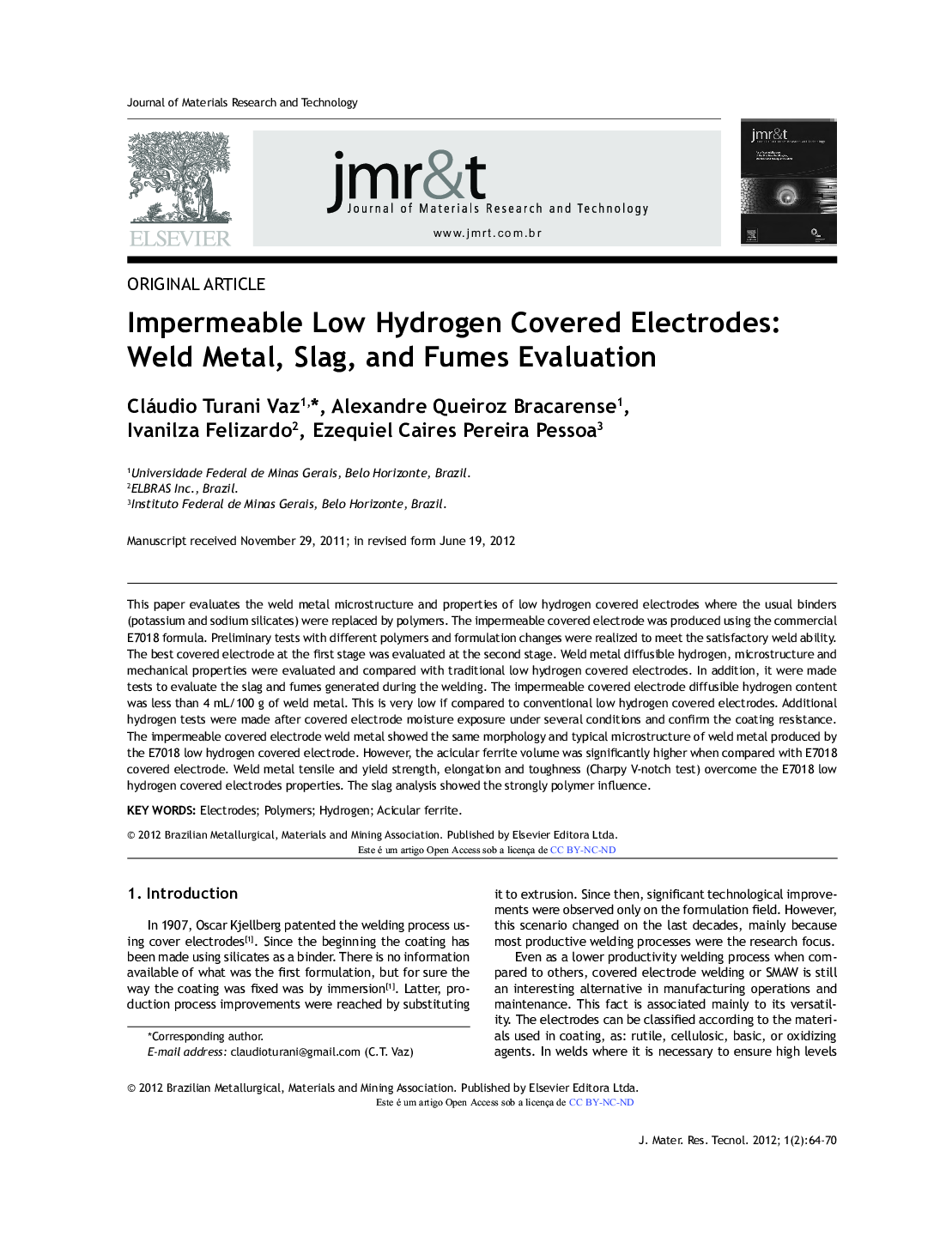| Article ID | Journal | Published Year | Pages | File Type |
|---|---|---|---|---|
| 1480006 | Journal of Materials Research and Technology | 2012 | 7 Pages |
This paper evaluates the weld metal microstructure and properties of low hydrogen covered electrodes where the usual binders (potassium and sodium silicates) were replaced by polymers. The impermeable covered electrode was produced using the commercial E7018 formula. Preliminary tests with different polymers and formulation changes were realized to meet the satisfactory weld ability. The best covered electrode at the first stage was evaluated at the second stage. Weld metal diffusible hydrogen, microstructure and mechanical properties were evaluated and compared with traditional low hydrogen covered electrodes. In addition, it were made tests to evaluate the slag and fumes generated during the welding. The impermeable covered electrode diffusible hydrogen content was less than 4 mL/100 g of weld metal. This is very low if compared to conventional low hydrogen covered electrodes. Additional hydrogen tests were made after covered electrode moisture exposure under several conditions and confirm the coating resistance. The impermeable covered electrode weld metal showed the same morphology and typical microstructure of weld metal produced by the E7018 low hydrogen covered electrode. However, the acicular ferrite volume was significantly higher when compared with E7018 covered electrode. Weld metal tensile and yield strength, elongation and toughness (Charpy V-notch test) overcome the E7018 low hydrogen covered electrodes properties. The slag analysis showed the strongly polymer influence.
